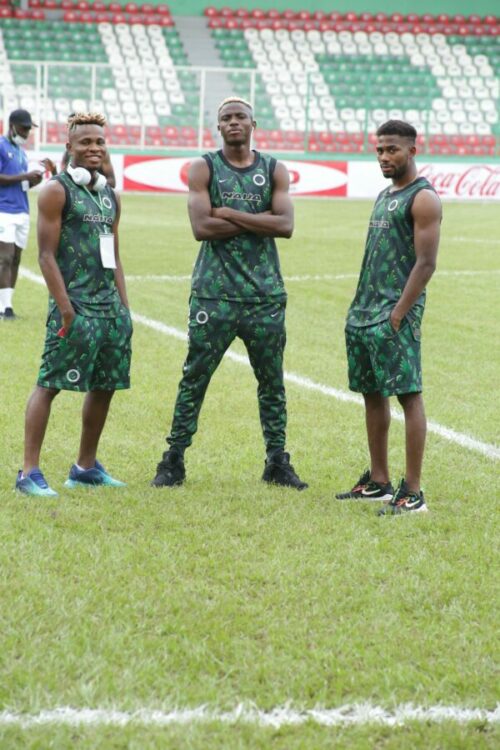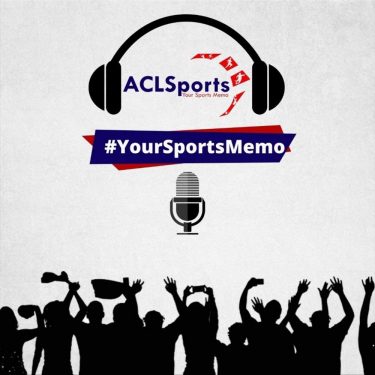Nigeria Super Eagles were handed a rude shock at the Samuel Ogbemudia Stadium, Benin City on Friday when their opponents, Sierra Leone came from four goals down to force a 4-4 draw in an Africa Cup of Nations (AFCON) qualification game.
Alex Iwobi netted a first half brace with Samuel Chukwueze and Victor Osimhen (who went off injured in the second half) also adding their names on the scoresheet. The Sierra Leoneans however managed to claw their way back and scored three times in the second half with substitute Alhaji Kamara netting twice.
ACLSports Chief Football Writer, Fisayo Dairo was one of the few journalists present at the game and he brought these four takeaway packs home.
1. A bird in hand is worth two in the bush
This popular adage came to mind immediately after the blast of the final whistle by Kenyan referee Peter Waweru Kamaku. At 4-1, Nigeria head coach Gernot Rohr started giving rests to his key players ahead of the return leg.
Captain Ahmed Musa and reliable centre back Leon Balogun (who needed treatment to a back injury in the second half after a challenge by Kei Kamara) were the first to be replaced by the German coach. The next double change saw two of Nigeria’s goalscorers Chukwueze and Osimhen (the latter due to injury) changed with Chidera Ejuke and Paul Onuachu when scores was at 4-2.
The result is what we are reflecting on.
2. Still searching for what Rohr sees in Akpoguma
Since Kevin Akpoguma gatecrashed into the Super Eagles camp last month in Austria, Mr Rohr has shown an incredible love for his fellow Germany-born star, featuring him in every Super Eagles game since then.
It is however baffling, how Mr Rohr fields the Hoffenheim defender at right back even at the expense of other more applied options. On Friday, Nigeria had Ola Aina, Tyrone Ebuehi, Chidozie Awaziem and Abdullahi Shehu on the bench (four players that have played at right back with considerable distinction under the German) but Rohr persisted with Akpoguma whom it is quite easy is shoe-in for the centre back role.
While Zaidu Sanusi at the opposite flank continued to bomb forward and even create an assist for Osimhen’s goal, Akpoguma on his own sat back in his team’s half, enjoying the year-ending sunshine in Benin City.
3. Where are our jokers?
The build-up to Friday’s game by the Super Eagles was characterised by outrage on social media when politicians joined in the team’s training sessions. Edo state Deputy Governor Philip Shaibu, Nigeria’s Minister for Youth and Sports, Sunday Dare and Nigeria Football Federation (NFF) President, Amaju Pinnick took turns to do rondos with the team during their ‘serious’ sessions.
With the way and manner the qualifying game was trivialised by the team and the Federation, it was expected that at least Shaibu who was a registered professional footballer until last year would have been on Rohr’s substitute list which could have turned out to be a magic wand for the Eagles.
With the game slipping out of control, the trio were the expected “jokers” that came to mind and could have really given the Super Eagles much needed ginger to stave off the shinning Stars from Freetown. That didn’t happen and a lesson of professionalism should have been served to the Federation and coaching crew.
No laws may have been broken and maybe no ethical flout in those exercises but such further portrayed how the Super Eagles is turning to a tool of propaganda and unseriousness in Africa.
4. New stadium, same pitch and light nightmare
The Samuel Ogbemudia Stadium, Benin is perhaps the latest facility (re)constructed in Nigeria. Much was said about the Video Assistant Referee (VAR) technology available at the stadium, the first in Nigeria, but Friday’s game exposed how the VAR move could easily be termed leaving malaria to cure leprosy.
While kudos can be given to the stadium owners for thinking into the future by equipping it with VAR facilities, the state of the most important features for footballers; ‘pitch and lighting’ leaves much more to be desired.
The pitch was so heavy and the blades of the grass were quite high, making it difficult to move the ball quickly on the surface whenever players wanted to exchange passes. The pitch reminds one of the sorry Stephen Keshi Stadium pitch in Asaba, although this was marginally better. Perhaps the Bendel connection at work.
https://twitter.com/chrisboguguo/status/1327303384387493891?s=20
Still in comparing with Asaba, the lighting for a game played at 5pm local time was also inadequate. The floodlight stands at the Swimming Pool end of the stadium were too far to the stadium and so could not provide the needed lighting for one part of the pitch. At a time, Zaidu Sanusi had to bring back his experience of playing in the dark in the street of Birni-Kebbi, to be able to adapt to the double jeopardy of the pitch and darkness.
As of now, only the lightings of the Nest of Champions, Uyo has been found blameless (though can still be upgraded) among all the sporting facilities in Nigeria, and with a very good type of grass as well. This is not in any case making a case for Uyo (which will not be out of place anyway), but the main point is; if the Uyo Stadium constructed six, seven years ago got these little things right, why have the newer facilities in Asaba and now Benin City failed in giving the Super Eagles a proper home advantage?
Conclusion: The good thing remains that Nigeria are still top of Group L and will move to within touching distance of qualification for the January 2022 AFCON tournament in Cameroon.














